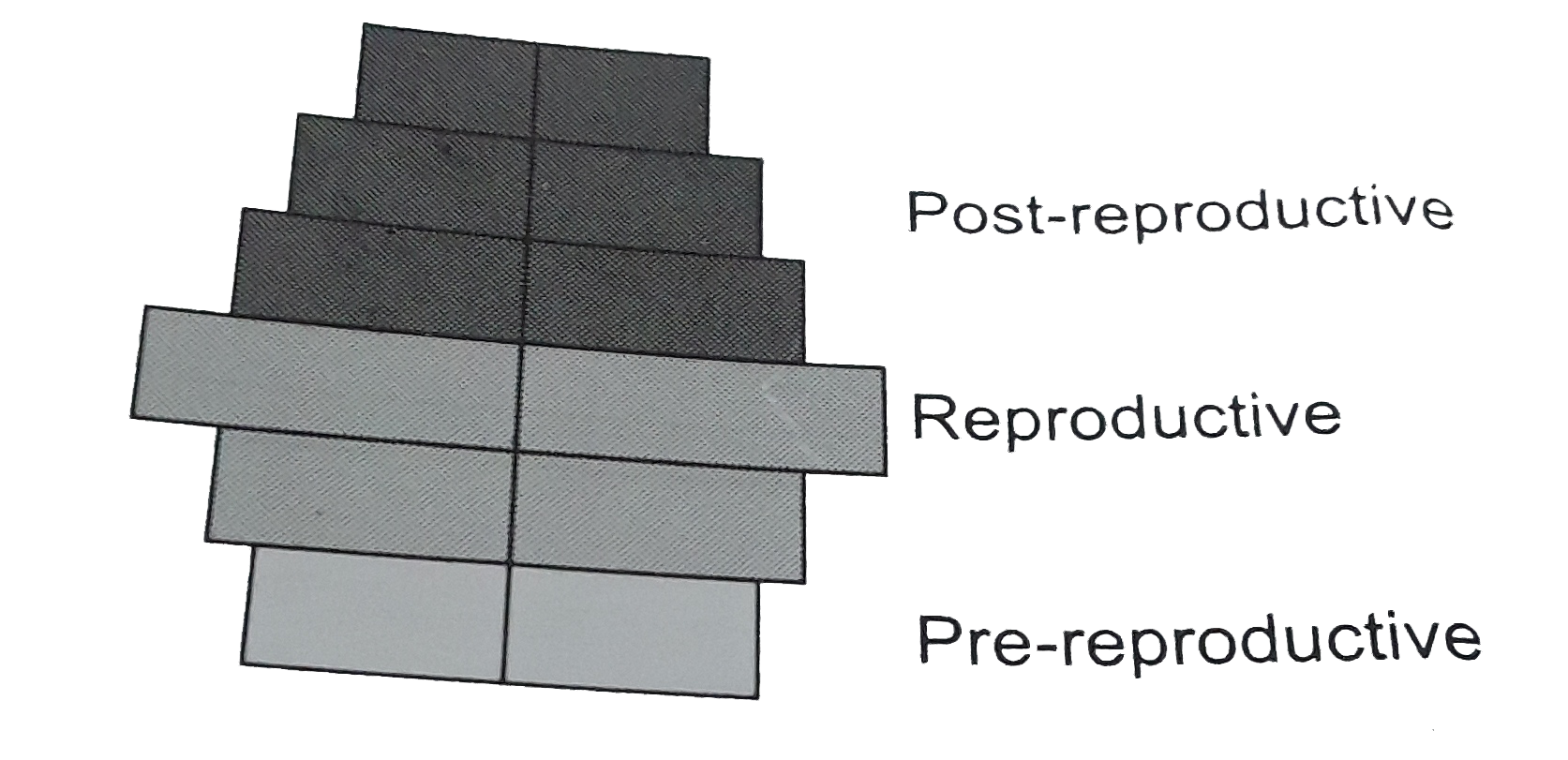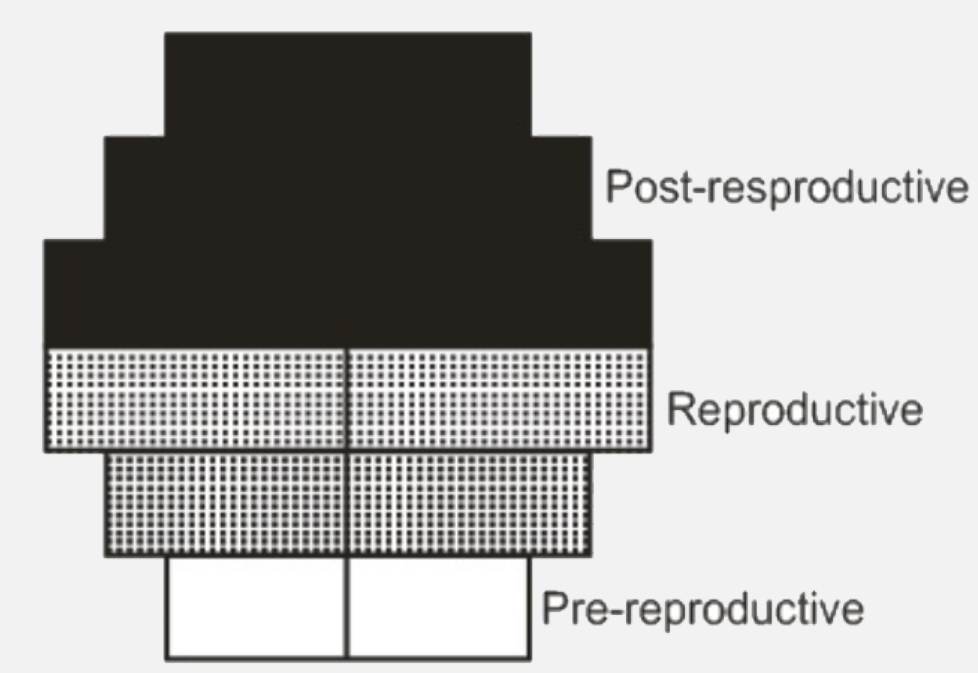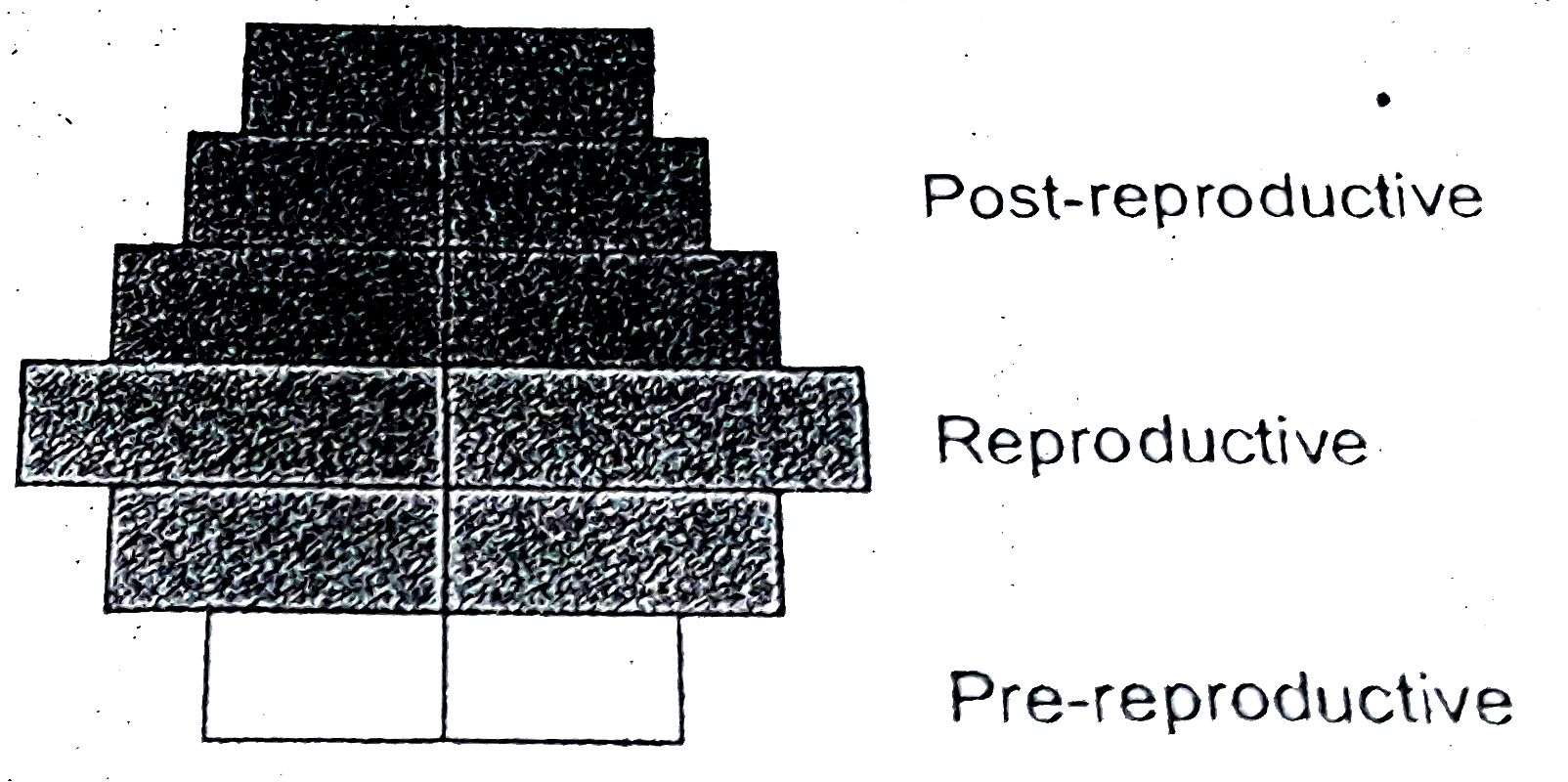What type of human population is represented by the following age pyramid?

A
vanishing population
B
stable population
C
declining populations
D
expanding population
Video Solution
Text Solution
The correct Answer is:C
|
Answer
Step by step video & image solution for What type of human population is represented by the following age pyramid? by Biology experts to help you in doubts & scoring excellent marks in Class 12 exams.
Updated on:21/07/2023Topper's Solved these Questions
- ORGANISMS AND POPULATIONS BOOK - PRADEEPCHAPTER - ORGANISMS AND POPULATIONS EXERCISE - Practice Questions (II. Assertion - Reason Type Questions)
18 Videos
- ORGANISMS AND POPULATIONS BOOK - PRADEEPCHAPTER - ORGANISMS AND POPULATIONS EXERCISE - Analytical (Questions with Answers)
20 Videos
- ORGANISMS AND POPULATIONORGANISMS AND POPULATIONSBOOK - PRADEEPCHAPTER - ORGANISMS AND POPULATIONORGANISMS AND POPULATIONSEXERCISE - Additional Questions (Very Short Answer Questions)
1 Videos
- PRINCIPLES OF INHERITANCE AND VARIATION BOOK - PRADEEPCHAPTER - PRINCIPLES OF INHERITANCE AND VARIATION EXERCISE - ASSERTION-REASON TYPE QUESTIONS
15 Videos
Similar Questions
Knowledge Check
What type of human population is represented by the following are pyramid?
 AExpanding populationBVanishing populationCStable populationDDeclining population
AExpanding populationBVanishing populationCStable populationDDeclining populationWhat type of human population is represented by the adjacent pyramid?
 AExpanding populationBVanishing populationCStable populationDDeclining population
AExpanding populationBVanishing populationCStable populationDDeclining populationWhat type of human population is represented by the pyramid given below ?
 ADelining populationBStable populationCExpanding populationDVanishing population
ADelining populationBStable populationCExpanding populationDVanishing population

(a) Label the three tiers 1, 2, 3 given in the above age pyramid.
(b) What type of population growth is represented by the above age pyremid?
View SolutionGrowth of human population is represented currently by
View SolutionExponential growth in human population is represented in
View SolutionThe age structures of a population represents
View SolutionHuman population follows :
View Solution

